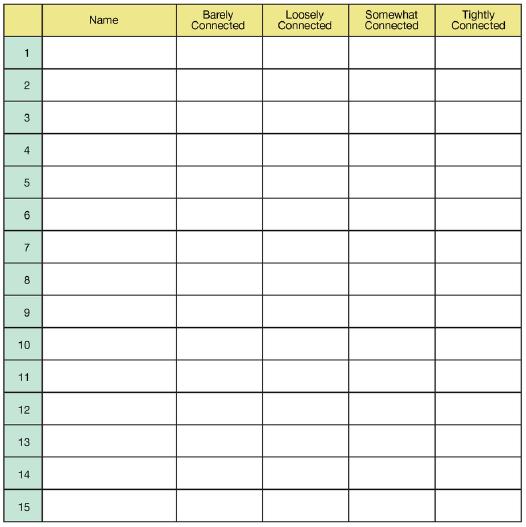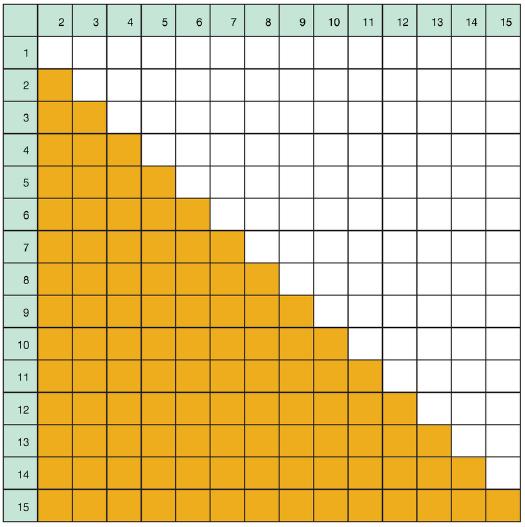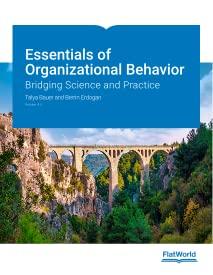For most people, it would be hard to manage a huge network where all the ties are
Question:
For most people, it would be hard to manage a huge network where all the ties are very close, just by virtue of the amount of time and energy it takes to satisfy the conditions for closeness. Identifying Central Connectors Count how many names you circled in step 4. Each of these individuals plays a special role in your network as they are central connectors who serve to expand your network by introducing you to new people. If you are also a central connector, this can be a benefit to assessing information as long as you are able to keep the network from distracting you from your work. Network Density Network density is important. When a person’s network density is 1.0, that indicates that everyone in the network knows everyone else. Whether this is good or bad depends on a few things. For example, if everyone in your network has additional networks they belong to as well, you would be playing a central role in their networks and you would be a boundary spanner. But if they also have high network density, the odds are that no new information is getting introduced into your group. You are basically a closed loop in which the same people interact with one another, and it is challenging to assess changes in the environment or to be innovative. Social networks change over time depending on your tenure in an industry or company. The longer you have been in a given industry, the more likely it is that you will see your network size begin to shrink and become more dense. Consider factors relating to power and influence and how you might go about strengthening and increasing the size of your network. What are the pros and cons of doing so?
• Step 1: Think of a specific objective you have at work or school that involves other people. Once you have thought of an objective, jot it down.
• Step 2: Use Figure 13.5 to list five to 15 people at your school or in your professional network who you have regular contact with and who are relevant to the objective you identified.
• Step 3: Rate how tightly connected you are with the people in your network by placing a check in the corresponding column (barely connected, loosely connected, somewhat connected, or tightly connected) on the right-hand side of their name.
• Step 4: Circle the name of anyone who has introduced you to four or more new people since you have known them.
• Step 5: In Figure 13.6, place a check mark in the intersecting box of people that know each other. For example, if person 1 knows person 2, put a check mark under the 2 at the top of the table. Continue to do this throughout the grid (orange boxes should be left blank).
• Step 6: Analyze your network using the guidelines on the following calculations.
• Step 7: Consider ways to strengthen your network.
FIGURE 13.5
FIGURE 13.6
Let’s see how your social network adds up:
Calculating Network Size The number of people you listed in your own network for this situation N = _____ Calculating Network Density
It is important to understand what the maximum density of your network is. This refers to how dense it would be if everyone in your network knew each other. (N * (N − 1)/2 = M) or ( _____ * ( _____ − 1)/2 = M) M = _____
Total number of checkmarks in Figure 13.5, which represents number of relationships among people in your network. C = _____
Density of your network (will range between 0 and 1) C / M = D _____/_____= D D = _____ Network Size N = number of people in your network. The more people in your network, the greater the amount of information and possibly access to greater resources you have. We stopped at 15 people, but many individuals have more people in their network than 15. Network Strength The strength of your network is also important. You can talk about this in terms of percentages of your relationships. What percentage are very tightly connected? Close? Somewhat connected? Or barely connected?
• ___% Tightly Connected
• ___% Somewhat Connected
• ___% Loosely Connected
• ___% Barely Connected
Step by Step Answer:

Essentials Of Organizational Behavior Bridging Science And Practice
ISBN: 9781453339244
1st Edition
Authors: Talya Bauer, Berrin Erdogan





